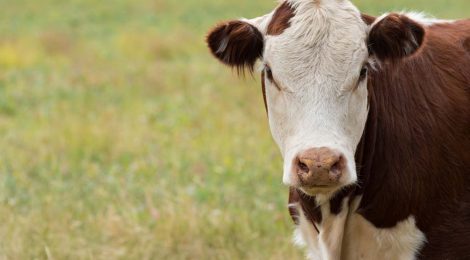
Half of Canadian cow-calf producers fail to follow Codes of Practice
Results from the first Canadian Cow-Calf Survey, which gathered responses from 600 cow-calf producers across Canada, have been published by the Beef Cattle Research Council.
The survey is intended to provide a comprehensive assessment of cow-calf production practices throughout the country. As with previous animal agriculture surveys (for example, the Canadian National Dairy Study conducted in 2020 which showed that 81% of dairy producers left sick animals to suffer and die and 7% of producers used bludgeoning as their preferred method of euthanasia), responses to this latest survey expose serious violations of the National Farm Animal Care Council’s Canadian Code of Practice for the Care and Handling of “Beef” Cattle.
The codes are developed by industry and establish minimum animal welfare standards for Canadian producers to follow. The codes are voluntary and no inspections are conducted to ensure compliance. When challenged, those in industry point to these codes as proof of their commitment to animals, but surveys like this lay bare the truth of what’s really happening to animals on Canadian farms.
Key findings of the survey:
- Although required by the code, 53.4% of Canadian cow-calf producers fail to provide pain relief to animals during castration
- Although recommended by the code, 30% of producers fail to provide pain relief to calves being dehorned
- Although the code recommends against the practice, 50.8% of Canadian producers use forced separation (i.e., abruptly removing a calf from their mother) as their primary form of weaning
- Mortality rate for calves remains high with 4.6% of those born to cows dying before weaning and 6.4% of those born to heifers (first-time moms) dying before weaning; approximately half of these deaths occur within the first 24 hours of birth
- Although the practice is heavily discouraged, 33% of producers continue to hang calves upside down to resuscitate them (the position causes the stomach and intestines to press down on the calf’s diaphragm, compressing the lungs and making it harder for them to breathe).
The Code of Care for “Beef” Cattle was released in 2013 – an incredible 11 years ago – yet producers continue to fail to meet even its minimal requirements.


